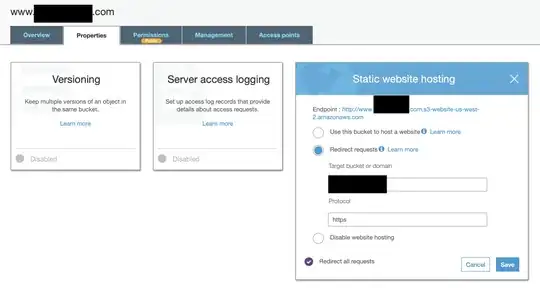I host my site at domain.com.
My DNS entries in Route53 are as follows:
domain.com A xxx.xxx.xxx.xxx 300
domain.com NS stuff.awsdns-47.org 172800
domain.com SOA stuff.awsdns-47.org 900
I would like to redirect traffic from www.domain.com to domain.com, as currently this just returns a 404. This question on SO suggested a PTR record, and I added that:
www.domain.com PTR domain.com 300
but it didn't work. What should I be doing?


